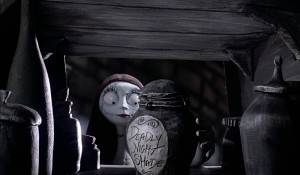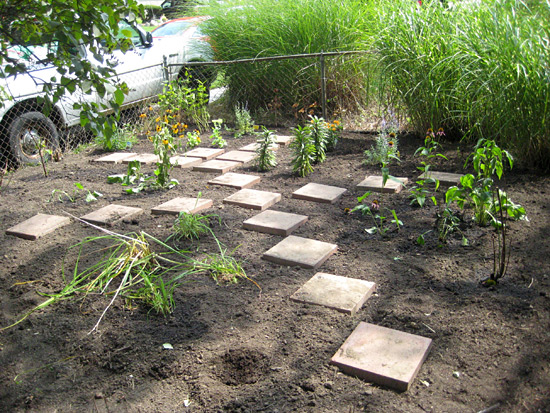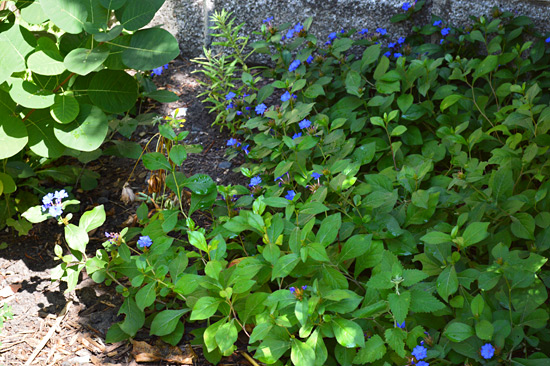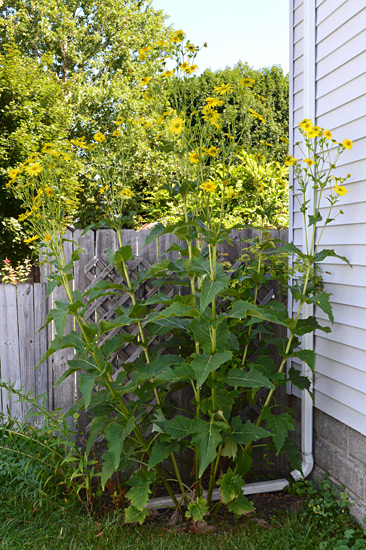
I love Halloween, so a holiday-appropriate post appearing on my garden journal was only a matter of time. For October, I wanted to further research some of the more gruesome features of a garden. The first choice was a given. Deadly Nightshade is known throughout literature, film, and even bits of history for its poisonous properties. When a witch is shown cackling over her cauldron, you can bet money one of those potion ingredients will be nightshade. So, I wanted to learn more about this plant whose name is more fun if you whisper it in your most spooky tone of voice.
Nightshade Cameos

Recently the Other Half and I were watching an episode of Penny Dreadful where the characters Dorian and Vanessa were strolling through a greenhouse together. Vanessa mistakes the flower to be attractive and sensual but otherwise harmless. Dorian identifies the plant as deadly nightshade. Though the plant is a great symbol of Dorian’s role in Vanessa’s life, I of course noticed the plant looked just like one I had ripped from the Lot.
While researching deadly nightshade, I identified the flower in Penny Dreadful and the Lot as Solanum dulcamara or bittersweet nightshade. I’m wondering if this flower had the attractive face for film, so it was chosen over the actual deadly nightshade plant. According to the Center for Invasive Species and Ecosystem Health, all parts of bittersweet nightshade (foliage, flowers, fruit, root, stem) is toxic so one should wear gloves when handling the plant. Though I love the feel of soil in my hands, I decided seasons ago to begin wearing gloves in the garden. Thank goodness.
The Real Deal – Atropa Belladonna
Atropa belladonna is a perennial belonging to the family Solanaceae, or the nightshade plants. Colorful, common names for this plant include devil’s berries, naughty man’s cherries, death cherries, beautiful death, and devil’s herb. Other plants in this family include tomatoes, tobacco, potatoes, and eggplants. Deadly nightshade hails from Eurasia and prefers to lurk about wetlands in shady areas. How appropriate.

“Atropa Bella-donna3” by Tom Oates at the English language Wikipedia. Licensed under CC BY-SA 3.0 via Commons.
The United States Department of Agriculture Forest Service states when “Linnaeus formally applied a scientific name to this plant in 1753, he acknowledged its toxic nature as well as its social value.” Many sources shared that “belladonna” is translated as “beautiful lady.” Women of the Venetian court would use deadly nightshade to dilate their eyes, making them appear more alluring. “Atropas” is one of the three Fates in Greek Mythology, her tool being a set of shears she would use to snip the thread of (and therefore end) life.
Effects of Deadly Nightshade
All parts of deadly nightshade are poisonous, including the seductively sweet berries. Most poisonings with the plant happen through ingestion. The North Carolina State Cooperative Extension site identifies belladona poisoning symptoms as “Fever, rapid pulse, dilation of pupils, hot and dry flushed skin, headache, dry mouth, difficulty of swallowing, burning of the throat, hallucinations, convulsions.” Doesn’t sound like a good time.
But why?!
Yeah, I couldn’t stop the research at “this plant is bad news.” I wanted to know why it caused these symptoms. Stick with me because this is really interesting. Atropa belladonna contains toxic tropane alkaloids. These have the ability to block functions of the body’s nervous system. In fact, I discovered many optometrists use eyedrops containing atropine to dilate a patient’s eyes before the exam.
For Evil or Good
However, the Medicinal Plant Genomics Resource (a project through Michigan State University) cites how several of these alkaloids are utilized as medicine. Atropine is used for bradychardia and Wenckebach block, scopolamine for motion sickness, and hyoscyamine treats symptoms of gastrointestinal disorders. Sister G, being a nurse by profession, put atropine’s general use in medicine into layman’s terms for me. She summarized it’s use as “something to dry up secreting glands.” For example, hospice patients are given a drop of atropine beneath the tongue so their airway is not blocked by saliva.
Rip it Out
I agree with most horticultural sites I browsed when they say nightshade should be viewed as a weed. It rambles about and can easily lure domestic animals or neighborhood children to their doom… or at least an expensive vet / doctor bill. In its stay on the Lot, I hardly ever saw pollinators visiting the bittersweet nightshade. Plus, when I removed the plant, it released an awful smell and the fleshy root constantly broke. Deadly nightshade is supposed to have the same root structure. Either way, it will try your sanity as a gardener.












